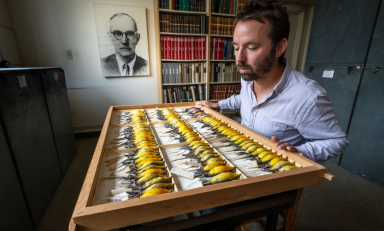
Commentary calls for policies to protect women, especially women of color, from exposure to toxic chemicals in beauty products.
Women of color have higher levels of beauty product-related chemicals in their bodies compared to white women, according to a commentary published today in the American Journal of Obstetrics and Gynecology. The authors say even small exposures to such toxic chemicals can lead to health problems. They go on to say that reproductive health professionals must be prepared to counsel patients who have questions about such exposures. Health professionals can also promote policies such as improved testing and disclosure that will protect women, especially women of color, from harmful chemicals in cosmetics and other personal care products.
"Beauty product use is a critical but underappreciated source of reproductive harm and environmental injustice," the commentary says.
The authors point out that the beauty product industry is estimated to bring in more than $400 billion globally. They also say that previous studies have documented that Black, Latino and Asian American women spend more on beauty products than the national average, often because of marketing practices that emphasize a European standard of beauty.
"The failure of companies to disclose the chemical ingredients in their beauty products along with the targeted marketing of certain beauty products to women of color can negatively impact reproductive health," says Bhavna Shamasunder, assistant professor of urban and environmental policy at Occidental College.
"Pressure to meet Western standards of beauty means African American, Latina and Asian American women are using more beauty products and thus are exposed to higher levels of chemicals known to be harmful to health," says Ami Zota, assistant professor of environmental and occupational health at Milken Institute School of Public Health at George Washington University, who co-authored the commentary.
For example, women of color buy products like skin lightening face cream that often contain hidden ingredients such as topical steroids or the toxic metal mercury. Black women are known to suffer more anxiety about having "bad hair" and are twice as likely to experience social pressure to straighten their hair. Hair products like straighteners or relaxers are likely contain estrogen and can trigger premature reproductive development in young girls and possibly uterine tumors, the commentary says.
Other studies show that beauty and personal care products contain multiple, hidden chemicals that are linked to endocrine, reproductive or development toxicity. They can be especially dangerous for women age 18 to 34, the authors say. Women in this age group are known to be heavy buyers, purchasing more than 10 types of beauty products per year. Such women and their children may experience heightened vulnerability to such chemicals, especially if exposure occurs during sensitive periods such as pregnancy.
At the same time, research suggests that low-income women of color are more likely to live in an environment with high levels of pollutants contaminating the air, soil and water. Thus women of color are not only heavy users of beauty products but may also be exposed to toxic chemicals simply by living in a more polluted home or neighborhood.
"For women who live in already polluted neighborhoods, beauty product chemicals may add to their overall burden of exposures to toxic chemicals," says Shamasunder. "Certain racial/ethnic groups may be systematically and disproportionately exposed to chemicals in beauty products since factors such as institutionalized racism can influence product use."
The commentary, "The Environmental Injustice of Beauty: Framing Chemical Exposures from Beauty Products as a Health Disparities Concern," appears online in the American Journal of Obstetrics and Gynecology.



